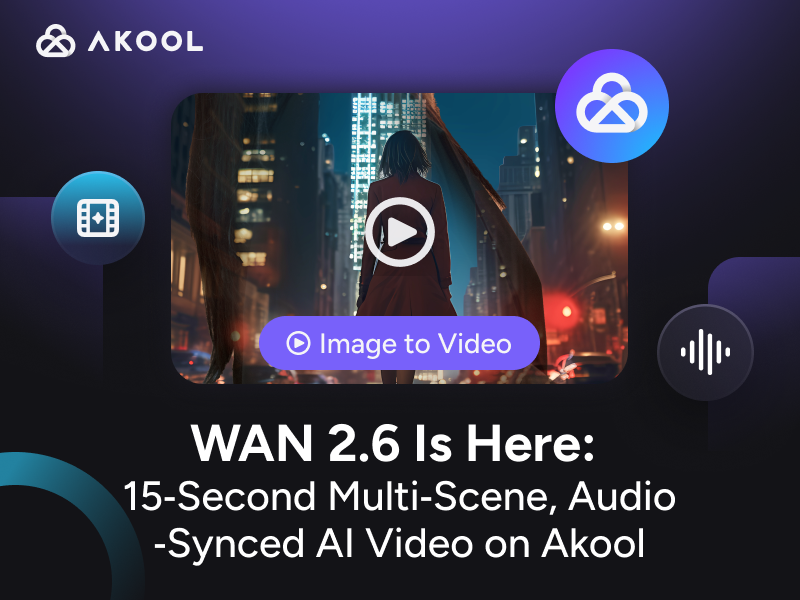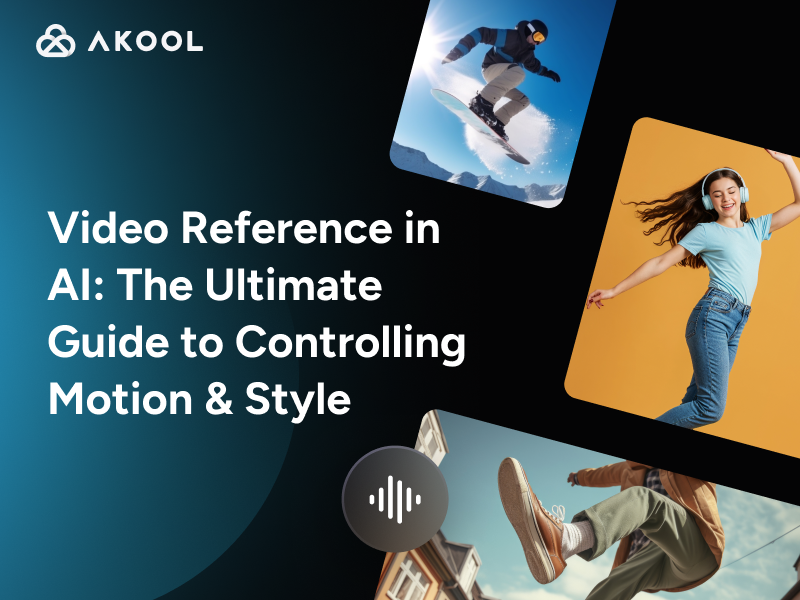Introduction to AI Translation Software
AI translation software leverages machine learning algorithms to convert text from one language to another. Utilizing neural networks, it analyzes context, grammar, and semantics for accurate translations. This technology supports multiple languages and dialects, offering real-time translation capabilities. Ideal for creators and agencies, AI translation streamlines content localization, maintains brand voice, and enhances global reach. Popular platforms include Google Translate and Akool's AI Video Translator.
How to Use AI Translation Software
AI translation software simplifies the process of translating content for creators and creative agencies. Here's how you can effectively utilize these tools:
Step-by-Step Guide
- Choose the Right Software:
- Evaluate popular options like Google Translate and Akool's AI Translation Tools.
Consider factors such as language support, integration capabilities, and user interface.
Prepare Your Content:
- Ensure your text is clear and free from errors to improve translation accuracy.
Identify the target languages for translation based on your audience.
Input the Text:
- Copy and paste the text into the translation software.
Some tools, like Akool's Video Translation, allow uploading documents directly for batch processing.
Select the Target Language:
- Choose the desired language from the software’s language list.
Ensure your selected software supports the dialect if applicable. For specific language needs, consider tools like AI Spanish To English Translation.
Review the Translation:
- Examine the translated text for accuracy and context.
Use the software's preview feature to spot check sections of the translation.
Edit and Customize:
- Make manual adjustments to maintain brand voice and cultural relevance.
Leverage any available customization features to fine-tune the translation.
Export and Implement:
- Download the translated content in your preferred format.
- Integrate the translated materials into your projects, such as marketing campaigns or e-learning modules.
Capabilities and Features
- Real-Time Translation: Enables immediate language conversion, ideal for live events and dynamic content.
- Multilingual Support: Offers a wide range of languages and dialects, ensuring broad communication reach.
- Contextual Analysis: Utilizes neural networks to deliver contextually accurate translations, beyond mere word-for-word conversion.
Useful Tips
- Consistency Check: Use glossaries or translation memories to maintain consistency across multiple projects, similar to Akool's AI Dubbing Tools.
- Feedback Loop: Continuously provide feedback to the software to enhance translation accuracy over time.
By following these steps and leveraging the capabilities of AI translation software, creators and agencies can efficiently produce multilingual content that resonates with global audiences.
Applications of AI Translation Software
AI translation software is revolutionizing the creative industry with its versatile applications. Here are some key examples and use-cases:
- Examples of AI Translation Software:
- Google Translate
Industry Uses:
- Content Localization: Creators and agencies use AI tools to adapt content for different cultural contexts, enhancing global reach.
- Real-Time Communication: AI translation enables instant multilingual communication in virtual meetings and webinars.
Subtitling and Dubbing: Automated translation assists in creating subtitles and dubs for videos, expanding audience accessibility. Explore more with AI Video Translator.
Popular Use-Cases:
- Marketing Campaigns: Tailoring messages for diverse markets.
- E-learning Platforms: Providing multilingual educational content.
- Social Media: Translating posts to engage a broader audience.
AI translation software streamlines processes, making global communication more efficient.
Technical Insights into AI Translation Software
Machine Learning Algorithms
AI translation software utilizes advanced machine learning algorithms, such as neural networks, to facilitate language conversion. These algorithms are trained on vast datasets, enabling them to understand and predict linguistic patterns effectively.
Neural Networks
At the core of AI translation are neural networks, which mimic the human brain's processing. They analyze the input text's context, grammar, and semantics, ensuring the translation is not just word-for-word but contextually accurate.
Multilingual Support
AI translation systems are designed to support a wide array of languages and dialects. They can seamlessly switch between languages, allowing for real-time translations that cater to diverse linguistic needs. For example, AI Japanese To English Translation and AI Arabic To English Translation offer specialized services.
Real-Time Translation
One of the key technical features is real-time translation. By processing data rapidly, AI translation software can provide instant translations, which is crucial for applications like live communication and dynamic content updates.
Popular Platforms
Leading platforms like Google Translate and Akool's AI English To German Translation exemplify the application of these technologies. They use complex algorithms to deliver translations that are continually refined through user feedback and ongoing learning processes.
Table: Comparison of AI Translation Software Features
| Feature | Google Translate | Akool AI Translation Tools |
|---|---|---|
| Real-Time Translation | Yes | Yes |
| Multilingual Support | Extensive | Extensive |
| Contextual Analysis | Advanced | Advanced |
| Customization Options | Limited | Extensive |
| Integration Capabilities | Moderate | High |
Table: Language Support in Akool's AI Translation Tools
| Language Pair | Translation Tool |
|---|---|
| Spanish to English | AI Spanish To English Translation |
| Japanese to English | AI Japanese To English Translation |
| Arabic to English | AI Arabic To English Translation |
| English to German | AI English To German Translation |
Statistics on AI Translation Software
AI translation software has become an indispensable tool for creators, developers, and creative agencies aiming to reach a global audience. Here are some key statistics that highlight the impact and utility of AI translation technologies:
- Market Growth:
- As of 2023, the AI translation market is valued at approximately $4.8 billion and is projected to grow at a CAGR of 19% from 2023 to 2030.
Reason for Growth: This growth is driven by the increasing demand for real-time translation services across various industries, including e-commerce, media, and education.
Accuracy Improvements:
- Recent studies show that AI translation software has achieved an accuracy of up to 95% for major languages like English, Spanish, and Chinese.
Why It's Useful: High accuracy rates significantly reduce the need for manual corrections, saving time and resources for content creators and agencies.
Language Coverage:
- Modern AI translation tools support over 100 languages, allowing for expansive global reach.
Why It's Useful: This broad language support enables creators and developers to tap into new markets and engage with diverse audiences without language barriers.
User Adoption:
- A survey conducted in 2022 revealed that 67% of businesses have implemented AI translation tools in their workflows.
Why It's Useful: High adoption rates indicate a strong trust in AI translation technologies to enhance communication and increase operational efficiency.
Cost Efficiency:
- AI translation services can reduce translation costs by up to 50% compared to traditional human translation services.
- Why It's Useful: Cost-effective translation solutions empower smaller creative agencies and independent creators to access professional translation services that were previously out of reach.
These statistics underscore the transformative potential of AI translation software in making global communication more seamless, efficient, and cost-effective for creators, developers, and creative agencies.
Frequently Asked Questions About AI Translation Software
What is AI translation software and how does it work?
AI translation software uses advanced algorithms and machine learning to automatically translate text from one language to another. By analyzing vast amounts of linguistic data, it can provide accurate and contextually relevant translations.
How accurate is AI translation compared to human translation?
AI translation has significantly improved in accuracy due to advancements in natural language processing. While it excels in speed and efficiency, human translators are still preferred for nuanced and culturally sensitive content.
Can AI translation software handle multiple languages?
Yes, most AI translation services support a wide range of languages, making them suitable for global businesses needing multilingual communication.
What are the benefits of using AI translation software for businesses?
AI translation software offers scalability, cost-effectiveness, and faster turnaround times, enabling businesses to expand their reach and communicate effectively with international audiences.
Is AI translation software secure for sensitive data?
Reputable AI translation services implement robust security measures, including encryption and data protection protocols, to ensure the confidentiality and safety of your information.
How can AI translation improve customer experience?
By providing real-time, accurate translations, AI translation software enhances customer support and engagement, allowing businesses to offer personalized experiences in multiple languages.
Does AI translation software integrate with other business tools?
Many AI translation services offer integration capabilities with popular business tools and platforms, streamlining workflows and enhancing productivity.
What industries benefit most from AI translation services?
Industries such as e-commerce, travel, healthcare, and legal services greatly benefit from AI translation software by facilitating seamless communication and expanding their global reach.




